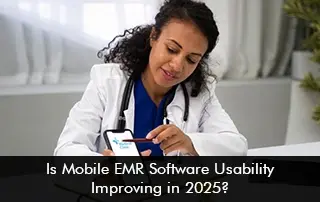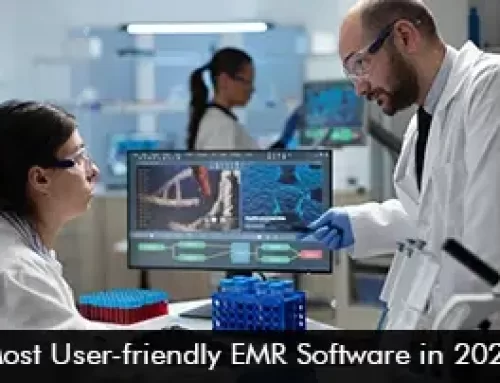Mobile access or the use of Mobile EMR Software Systems has revolutionized Electronic Medical Records Software by boosting accessibility and making way for convenient workflows. With Mobile EHR Software, clinicians don’t have to be tied to their work desks but can easily practice on the go via their smartphones. Unsurprisingly, the US smartphone market is the largest in the world, with smartphone sales soaring to 110 billion dollars this year. This has automatically made Mobile EMR Software in demand.
What is Mobile EHR Software?
Healthcare providers can access, monitor, and update patient medical records via mobile devices like smartphones and tablets with mobile Electronic Medical Records (EMR) software. By enabling real-time data entry and retrieval, this software system makes medical records more portable and enhances the precision and efficiency of patient care.
A user-friendly interface designed for mobile use often provides access to functions including lab results review, appointment scheduling, clinical recording, e-prescribing, and secure communications in mobile EMR software, offered by EHR Software vendors like athenahealth EMR Software and AdvancedMD EHR Software.
The Importance of Mobile EMR Software Customization in 2025
The ability to customize mobile EHR software in 2025 is essential because it enables medical providers to fit the system to their workflows and demands. This flexibility increases productivity by simplifying procedures and guaranteeing that the system complies with the particular needs of various specializations and user preferences.
As physicians may modify the software to incorporate pertinent features, forms, and templates, customization also increases user satisfaction and adoption rates. This eventually results in improved patient care and more accurate medical record-keeping.
Improvements in Mobile EMR Software Usability in 2025
Better UX Design
Electronic Health Records Software vendors understand how critical it is for a mobile EMR System to have an intuitive interface. This year, vendors have been improving the user experience by making designs that are easy to navigate and an all-in-one dashboard, reducing the number of clicks.
Integration of AI
The seamless integration of AI in Mobile EHR Software is taking note-taking to the next level, bringing ease and reducing the number of hours spent on tedious documentation tasks. NLP and voice recognition tools can empower providers to dictate notes, leading to meaningful and uninterrupted patient and provider interactions.
Better EMR Software Interoperability
Embracing standards like FHIR is making Mobile EMR Software solutions integrate with labs, devices, and imaging, making way for smooth and efficient workflows. Data from home monitoring devices is also being integrated into the EHR System, making mobile software systems more crucial than ever.
Challenges of Mobile EMR Software
There is no doubt that Mobile EMR Software usability is enhancing, improving user satisfaction, and patient care quality. However, some challenges are being faced:
- Even with better Mobile EHR Software usability, providers have complained about slow loading and downtime.
- A one-size-fits-all design may not work for every specialty.
With advanced technology solutions and an increased use of tablets, accessing Electronic Health Records Software on tablets at the point of care can reduce physician time and boost workflows in hospitals. Mobile usability is getting better in some places, but to validate widespread innovations, the field needs large-scale, standardized studies that are specific to mobile devices in the United States.
Got more EMR Software questions? Don’t worry, we have got you covered. Contact EMRSystems today.







